It looks like you may be using adblocking software to view this site.
Many features on the site, such as video playback, may not work properly when using adblocking software.
Please whitelist our domain or disable your adblocker to access all features and videos.
Back in 1988, a chance friendship helped strike the deal that changed rugby league.
Three decades after Tina Turner's "The Best" became the foundation of the most iconic campaign in rugby league history, the NRL has brought the song back with NRL.com given behind-the-scenes access to the recording of a documentary about this year's campaign.
It all started 32 years ago when then-NSWRL boss John Quayle's assistant, Nicky Braithwaite, happened to be mates with Roger Davies – who happened to be an Aussie bloke, who liked rugby league, and also happened to be the manager for US rock queen Tina Turner.
Phone calls were made, things progressed, offers were accepted, Quayle ignored the doubters and in 1989, Turner's "What You Get Is What You See" changed the direction of rugby league in Australia.
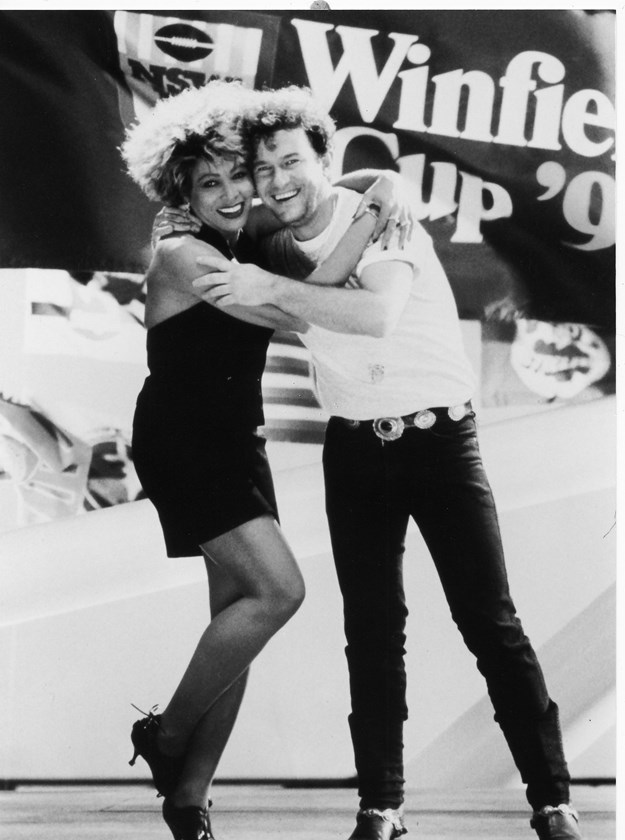
One year later her new hit "The Best" went even bigger and better. There was a duet with Jimmy Barnes and this time Turner was actually flown to Australia to record the promo.
The song and the campaign are instantly recognisable and instantly associated with rugby league – so much so that, 30 years on, the NRL has brought the campaign back after years of clamouring from fans for the anthem to return.
NRL.com spoke to two stars from the original campaigns – Cliff Lyons and Andrew Ettingshausen – plus a host of current players who were involved in the documentary.
It looks like you may be using adblocking software to view this site.
Many features on the site, such as video playback, may not work properly when using adblocking software.
Please whitelist our domain or disable your adblocker to access all features and videos.
Simply the Best - The Untold Story
A cold day in London, a hot day in Sydney
A little-known fact about the original "What You Get Is What You See" campaign is, because of budget and time constraints, Turner's brief cameos were filmed in London where she was touring at the time so only UK-based Australian players were logistically able to appear in scenes with her.
If you watch the full ad, Turner only appears briefly in a couple of indoor shots while the rest was filmed in Australia, sans Turner.
It was a no-brainer that Ettingshausen – one of the most charismatic players in the game with blinding speed, good looks and flowing locks – should get the call-up as the Cronulla centre was in the middle an off-season stint with Leeds.
However when a Leeds game was postponed from a weekend to mid-week due to snow, Ettingshausen could no longer fit in the trip to London due to a pre-booked holiday, leaving his Leeds teammate Cliff Lyons and Gavin Miller, then at Hull KR, to carry the can.
Lyons admits to NRL.com there was some confusion on his part at the time. Not around why a 49-year-old African-American rock goddess was suddenly the face of a blue-collar, working-class game played almost exclusively on Australia's eastern seaboard and the north of England.
Rather it was around why it was he was shooting dressing room scenes with Turner rather than the best-looking man in league.
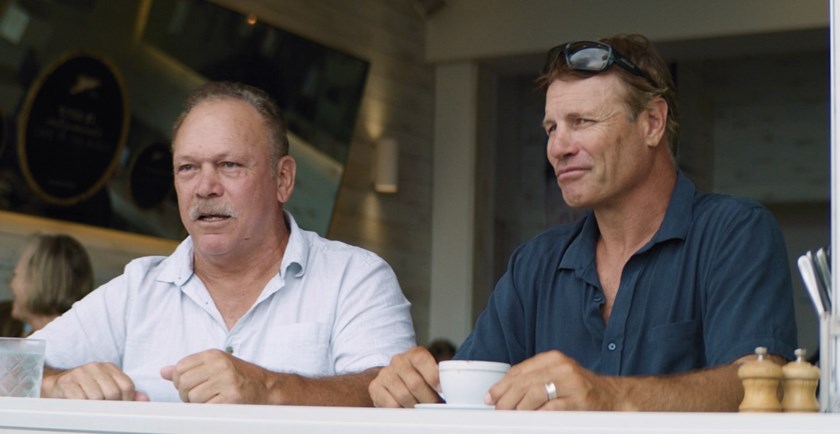
"I couldn't figure out why they asked myself and Gavin Miller but not ET!" Lyons laughed.
"We were over there playing in England, me and ET were in the same team, one of our games got cancelled and pushed back to mid-week and Andrew had a holiday booked so it was his misfortune and my fortune."
Lyons also admits to being extremely nervous the first time he met Turner but she quickly put him at ease.
"It was incredible to meet her, such a laid-back person and she was just lovely, a fantastic person to work with," he recalls.
Lyons appears only briefly in the original ad, as Turner gives him a playful push in the chest in what looks like a rugby league dressing room.
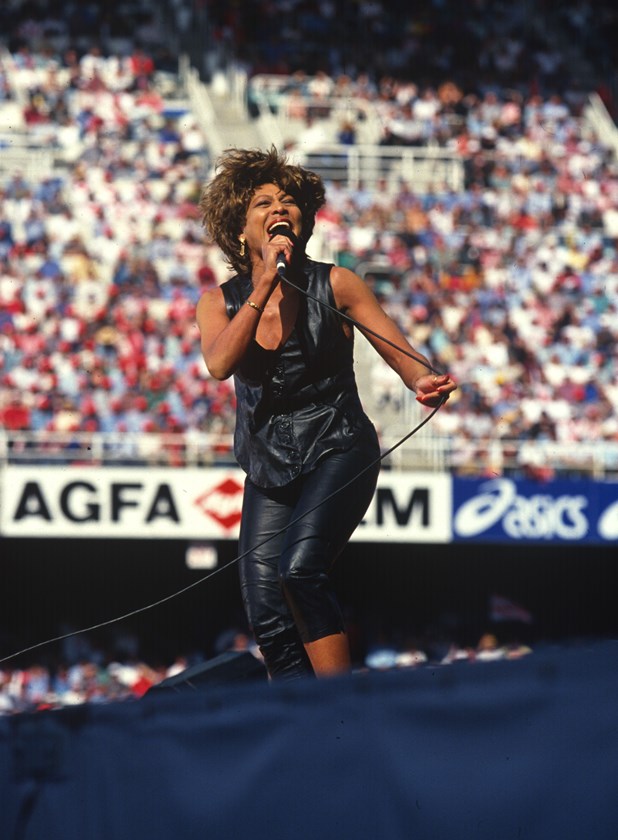
"I don't know what she thought she was in for but she loved it, she got involved in it and it was great to see."
Lyons applauded the NRL for bringing the campaign back after the impact it had the first time.
"It was a great initiative by the [NSWRL] to bring her into our game," he says.
"It had a great impact on the fans, the players themselves who were involved in it to be a part of making the ad. You could see what effect is had on people. Watching it on TV you couldn't wait to get to the footy.
"It was the excitement and adrenaline was running when you heard the song. Everyone loves memories and this is one of the most special ones in the NRL so to bring it back, it's a great initiative."
Talkin' bout a revolution
After a false start the first time around, ET was unsurprisingly front and centre when "The Best" hit screens.
The Sharks legend says while younger fans may not realise it today, the campaign came at a crucial time and played a key role in evolving the sport from an often-violent, park footy beat-em-up to the slick, stylish, tough-but-fair TV product that attracted new waves of fans – importantly, mums and kids – through the 1990s.
"There were a lot of changes. There was definitely a cry out for the game to become safer for the players," says Ettingshausen, who debuted in 1983 when there was one game a week on TV and swinging arms, eye gouges, squirrel grips and cheap shots were the norm rather than the exception.
By the time he retired in 2000, on the other side of the Super League war and pay TV deals, it was almost a different sport.
"There was a bit of a worry and concern that parents weren't going to put their kids into rugby league because of the violence out on the field," he adds.
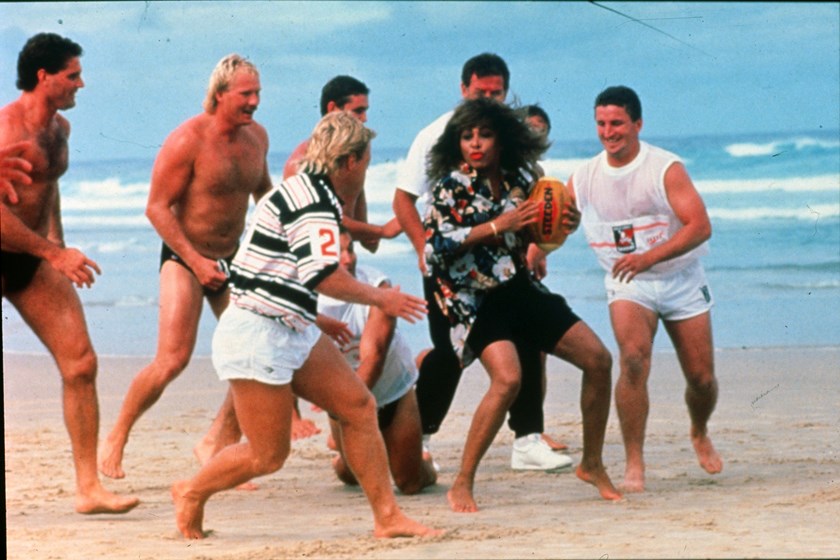
"So the game had to change and it wasn't just the Tina Turner campaign, it was the thought process from the NSWRL at the time that we have to start making these changes, we want the game to be attractive for the mums out there to get their kids into the sport but also turn up at the games and watch the ARL and so they had to tidy up the game.
"A lot of the things like head highs, a lot of rules and regulations were brought in to modify some of the action that was going on out on the field to keep it a game that everybody could follow and feel very comfortable with.
"It all happened at that same time. There's no doubt the Tina Turner campaign was an integral part of all of that as well. It was that changing time and there was no doubt it was also a huge positive for the game. It's shaped it to where it is today."
Ettingshausen hopes the return of the campaign will help unite the game. "There has been a lot of negatives being showcased and the game is such a great game and it really needs to be showcased for that," he says.
"I think there's going to be a positive reaction, especially from all the younger generation who never really witnessed the Tina Turner campaign and the way it was so motivating for everybody in the community and brought everybody together as one.
"For that younger generation who do think differently, it's going to be a whole new game on the market for them."
Ettingshausen's recollections of working alongside Turner were similar to Lyons's memories.
"She was very easy to chat to, she just stood around with the boys and chatted about whatever," he says.
"We asked her questions and she just talked like somebody you'd known all your life. For us, we were all in admiration of Tina.
"The American stars were bigger than Ben Hur so for us to be able to have chat to her and feel comfortable with her, just shows what type of person she was. She was very easy to work with and be around."
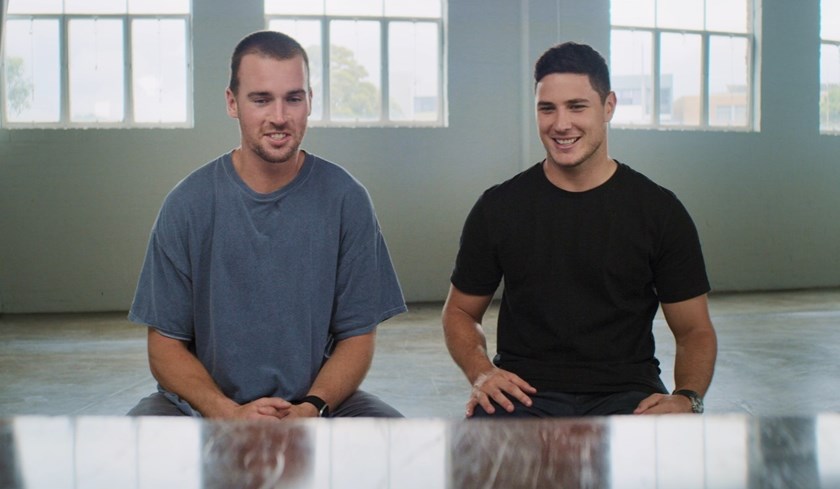
Family affair: A second generation steps up
Thirty years ago, Balmain legend Benny Elias featured heavily in both commercials and now his nephew Mitch Moses takes part.
At the start of the new promo the Eels halfback is seen running on to the field behind his skipper as Clint Gutherson deferentially touches the name of club legend, the recently passed Denis "Big D" Anderson. You can almost hear the cry. "Parra's in the tunnel!"
Moses and Gutherson also took part in the documentary, which involved filming a segment taping their reactions to watching the original videos.
"We were just watching the old ads, the '89 and '90 ads, and seeing how different rugby league is now to back then," Moses says.
"My uncle's in the ad so it's pretty special to my family and exciting to be a part of it.
"It's a great song. When you hear that song you think of rugby league. I still get goosebumps listening to it, thinking of rugby league.
"In the ad they were just being themselves and it showed in the way they played footy as well, there was no structure to anything and no structure to the ad, just them being themselves which I think is what people like to see.
"It's really helped shape rugby league to how it is today and hopefully it brings back some good memories for people that might not watch too much football anymore, it might get them back into football."
Bunnies, Blues and Kangaroos hooker Damien Cook also had an uncle feature in the original campaign.
Like Cook, Peter Phillips was a Helensburgh product. He was a nuggety five-eighth or centre who featured for Illawarra and Balmain in the late 1980s and early 90s and can be seen momentarily in some of the old training footage.
"I just remember when I was growing up, Mum would always point him out to us in the ad," Cook recalls.
"I still don't know exactly which one he is! I know what he looks like but he's only on the screen for a second."
Born in 1991, Cook wasn't alive when the campaign was released but he has an instant association between the song and the sport.
"I still remember listening to it. My brother would listen to stuff before he played footy so I did exactly the same," he says.
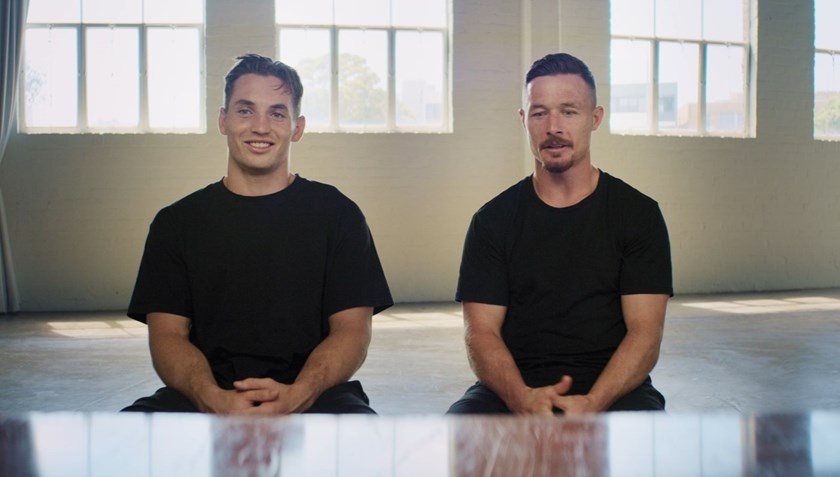
"I used to steal his Walkman so I could listen to music before and that song was on there.
"You hear stories of what the footy was like in the 80s. Bringing Tina Turner over from the States probably put a bit of class behind the game and the game was cleaned up a little bit to allow it to grow and encourage more people to play rugby league.
"This campaign that started in the 90s to where we are today, you almost thank that for the reason why the game is alive today."
An evolutionary change
It's not just the mullets and moustaches. It's not just the loose jerseys and the tight, tight shorts. It's not just the changing style of the on-field play. It's the entire profile and professionalism of the game that has radically changed over the past 30 years.
And the likes of Manly stars Daly Cherry-Evans and Tom Trbojevic are under no illusions as to the position of privilege they find themselves in compared to players in the 80s who had to work 9-5 and head to training on a Tuesday night.
"Good luck just getting Tom to do a day's work nine to five!" DCE laughs when NRL.com poses the question to the pair in Waterloo's Studio Mondo after filming of their segment wraps.
"Oh here we go," Turbo rolls his eyes. "This bloke hasn't worked a day in his life but I'm used to it mate, I'm on the tools flat out! But honestly, though, you couldn't imagine it, I couldn't do it."
DCE agrees. "Honestly, no way, I have so much appreciation for my job when I watch stuff like that and what they've had to do for us to be in the position we're in," he says.
"I've got so much respect for past players. The fact they did what they did on the back of working five days a week, it's unreal. I honestly don't think I'm up to it!"
DCE was familiar with the campaign before the documentary session while Turbo had never laid eyes on the old ads.
"I'd never seen them and they said don't watch them before but it was cool to see," Trbojevic says.
"She's such an icon and you can see all the old players getting a lot out of it. That's what the campaign is about, showing what a great game rugby league is. It would be a great way to associate the game with having fun."
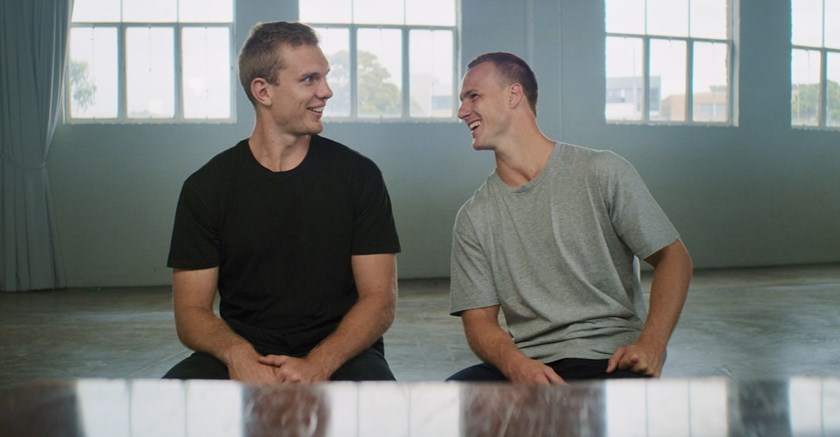
Having not seen them for many years, DCE says he'd forgotten just how hilarious the cheesy smiles and fashions were.
"I had an understanding of the ad campaigns from my childhood but I didn't understand how funny the detail was in them until I re-watched them," he says.
"It's pretty funny, it takes you back to your childhood for sure. The little details, the little smiles, it's just so funny.
"I know we laughed at it and joked around but I also really think the time's right to bring some of those things back."
Cook describes the song as positive, inspiring and motivating.
"It's going to give the game a fresh new look and head it in the right direction again like it did back in the 90s," he says.
"The fans want to see a bit of entertainment as well, we're in the entertainment business and we see a bit of personality come out as well.
"The fans don't want to see everyone like robots out there, they want to see a bit of personality. The more you can bring a bit of personality to it, it will keep growing the game as well."
A game for everyone
The biggest take-out of the original campaign for Jillaroos stars Sam Bremner and Simaima Taufa was the inclusiveness. The fact that, a generation ago, an African-American woman was chosen as the face of rugby league.
The pair believe it was a crucial step towards creating the profile for the women's sport that we have today.
"It's such a cool thought that they took a bit of a risk on getting her to do the promotion and it worked," Bremner says.
"It brought more families to the game and more females. By cleaning the game up it's only made it a better game. Who knows if we'd have the amount of participation we have now if we didn't have those changes.
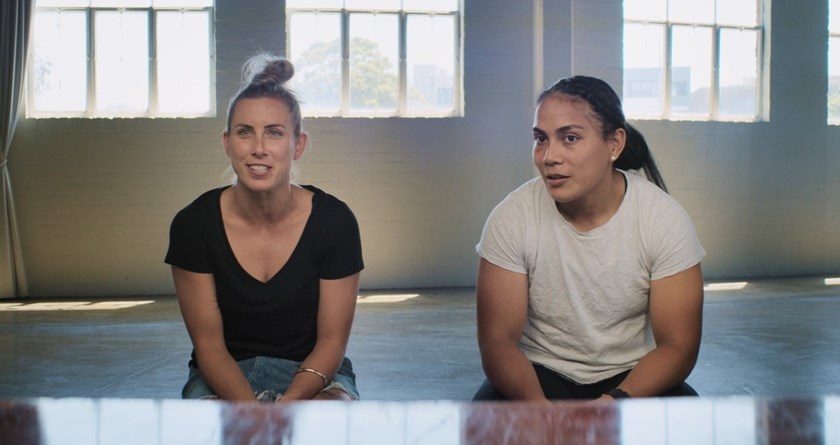
"The game's come such a long way and that was one of the steps to the NRL being known as a sport that includes everyone – every gender, nationality, age. It came out before we were born but we know it so well."
Taufa agrees.
"Being African American and being a female, it's inspiring to everyone that the game is so inclusive and is still inclusive to this day," she says.
"Having an icon like Tina Turner being part of the game, coming up with such an incredible song that resonates with everyone to this day and motivates and brings families together and especially inspires girls to be involved in the game, to see an international icon like Tina Turner be a part of the game, it allows us to thrive and make changes which it has now with NRLW being part of the game and a lot more female participation."








